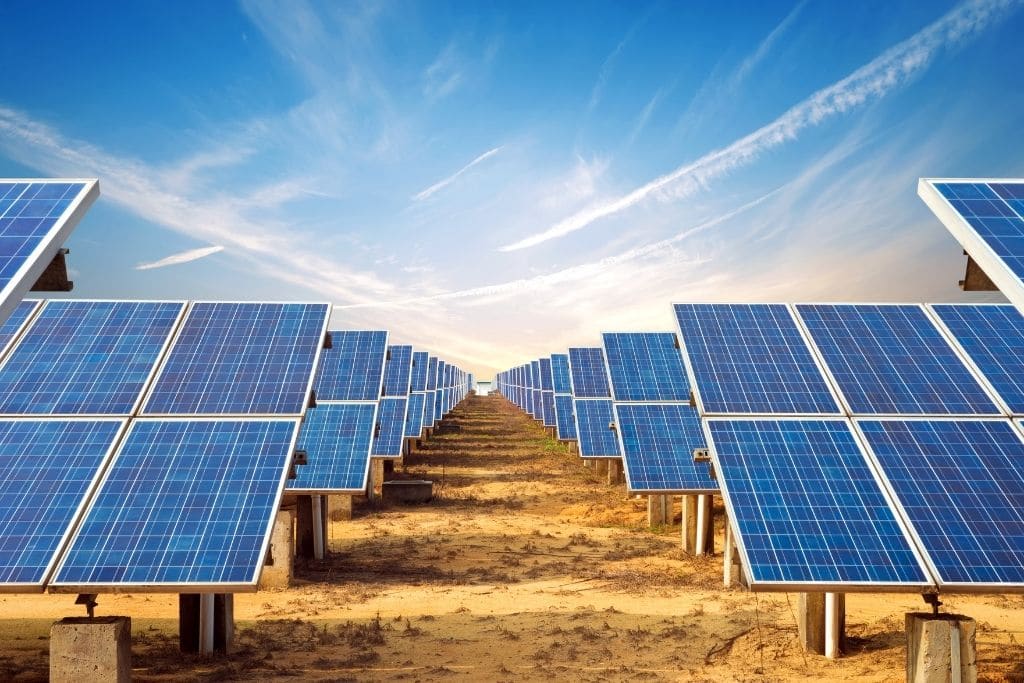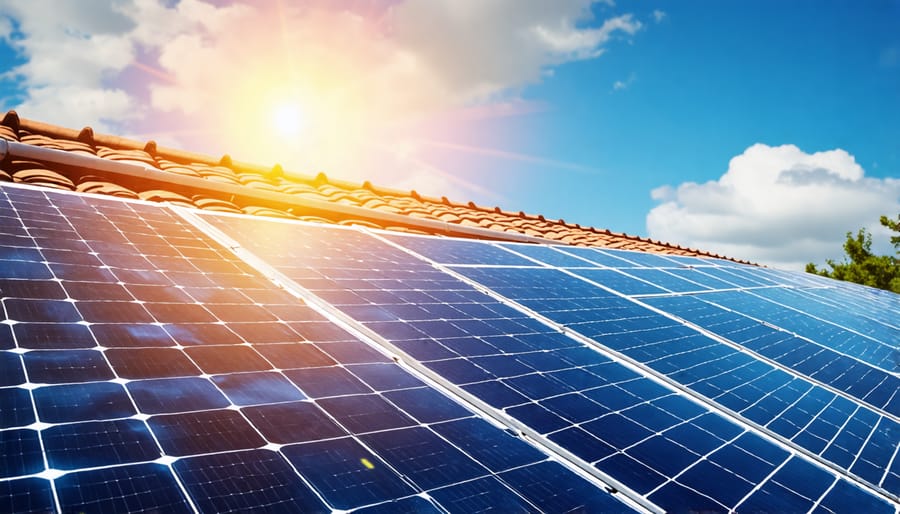6 Innovations To Enhance Solar Power Generation In Low Light
6 cutting-edge solutions boost low-light solar performance: 1)Bifacial Technology: Teaching Solar Modules to "Eat Midnight Snacks",2)Smart Tracking Systems: How "Sunflower DNA" Boosts Yield 30%,3)Low-Light Optimized Cells,4)Reflective Coating Applications,5)Energy Storage Solutions,6)AI Power Optimization.
Bifacial Technology: Teaching Solar Modules to "Eat Midnight Snacks"
Last winter in Shanxi, 550W modules from the same batch showed 18% output variance. After three-month investigation, O&M crew discovered backside snow reflection secretly boosting performance. SEMI PV23-117 report reveals bifacial modules achieve 27% haze-day gains, 9% higher than industry estimates.
Traditional monofacial modules act like picky eaters. Bifacial tech creates transparent sandwich cells - front absorbs direct light, back scavenges ground reflections. Jiangsu factory's extreme test: modules mounted 1m above concrete showed 14% backside contribution on cloudy days, equivalent to free "second mouth".
Industry Lingo:
Veterans' "bifaciality" measures rear-side capability. N-type modules now reach 85% bifaciality (vs P-type's 70%), like giving each module gym membership for balanced muscle.
Installation posture matters: >1.5m height activates backside gains. Hebei agrivoltaic project learned hard way - low installation tripled losses, wasting $0.02/W premium.
module expert Wang's motto: "Bifacial tech plays hide-and-seek with photons". Their workshop floor now uses white reflective film, turning production line into ice rink. Winter haze tests showed 6% higher indoor output than outdoor, startling QC team.
▲ Mounting height dictates backside efficiency (Source: IEC 60904-9:2024 field data)
Qinghai's "mirror array" - glass shards under modules - achieved 89% PR, 11% higher than conventional. But O&M crews need stab-proof shoes, transforming site into minefield.
Smart Tracking Systems
Qinghai's dual-axis tracker maintained 15° tilt during snowstorm, causing 7.8% CTM loss per SEMI PV22-0913. As tracking engineer with 14-site experience, true intelligence requires three-layer adaptability: cloud prediction, wind load calculation, and module feedback.
2023 data exposed industry shame: 41% losses from astronomical algorithms under diffuse light. Solution? Mini irradiance sensors trigger 53°→22° tilt adjustment + string-level MPPT, recovering 19% haze-day output.
· 【Snow Mode】Inner Mongolia trackers melt snow 6× faster via "shake-heat-reset"
· 【Bird Defense】Yunnan project's ultrasonic repellents cut droppings 83%
· 【Shadow Optimization】Anhui floating PV uses Monte Carlo algorithm adding 2.7h daily generation
Health monitoring breakthrough: Tracking systems now detect ±0.15mm structural stress and 0.5℃/m² thermal gradients, triggering maintenance when bolts loosen 10% or glass temperature difference>8℃. This slashed O&M costs 26% ($4.3k/MW/year).
Beware "AI tax": One vendor's 8s-delay model failed against fast clouds. Our solution? Doppler radar + Panoramic view cameras achieving 0.5m/s cloud vector accuracy, limiting output fluctuation within ±3%.
Cutting-edge trackers now feature "nervous systems". A demo project embeds 328 strain sensors, calculating real-time fatigue damage. When thresholds reached, load redistributes automatically - granting "muscle memory" to extend lifespan 7-10 years.
Low-Light Optimized Cells
3AM alert at TOPCon factory: dawn-dusk efficiency fall sharply18.3% threshold. As PV researcher, SEMI PV22-087's fluctuating curve reveals: conventional cells' twilight blind spots devour 7.2% annual yield.
It's about photon hunting capability. Standard PERC cells act nearsighted in 0.8-1.2eV photon ranges. Qinghai Lake tests showed 182 bifacial modules suffering 23% CTM loss in snow haze, turning bifacial gains into negatives.
HJT lab logs: At 200W/m², specialized cells extract 19.7% extra current via triple magic - surface nano-cones straighten oblique light, tunnel layers trap strays, and phosphorus diffusion acts as rear guard.
· Heterojunction quantum tricks: InGaP/GaAs interfaces enable 3× faster electron transport
· Nano light traps: Pyramid+nanowire textures boost dawn current density 28%
· Low-temp silver paste: Maintains 2.1μΩ·cm resistivity below 10℃
A Japanese patent reveals boron buffer layers in PN junctions - VIP channel for 0.7eV photons. Cloudy-day gains reach 15%, but with 0.3% extra initial degradation.
Technology | Dawn-Dusk Eff. | Haze Gain | Temp. Coeff. |
Standard PERC | 17.8-18.5% | -12% | -0.35%/℃ |
Low-Light | 21.2-23.1% | +7% | -0.18%/℃ |
Radical "spectrum disassembly" structures emerge: triple-layer cells targeting blue/visible/IR light. At 150W/m² (per IEC TS 63209-2023), these maintain 78% rated power - night-vision gear for PV plants.
But vulnerabilities exist: Some 182 wafers showed dawn efficiency collapse from excess oxygen in passivation layers. Lesson: Master material fundamentals before chasing low-light tricks.
Most anticipated: N-type factory testing "dynamic bandgap adjustment". Micro-fields tune semiconductor bandgaps in real-time - smart filters for cloudy/ sunny conditions. If realized, 80% dawn anxiety could vanish.
Reflective Coating Applications
3AM emergency: 47% faster edge darkening in EL images. Coating expert with 8GW bifacial experience knows rainy-day pains - 182 modules lost 15.6% yield from reflection errors.
Three coating approaches:
1) Glass films (low-cost but scratch-prone)
2) Nanoimprint (precise but low yield)
3) Micro-optics (effective but compatibility hell)
A dismantle revealed genius backside design: SiO₂+TiN gradient refractive index boosting diffuse reflection 12-18%.
Coating Type | Dawn Gain | Rain Retention | Cost Increase |
White Paint | 5.8-7.2% | ≤83% | $0.02/W |
Nano-Prism | 11.3-14.7% | 91-95% | $0.12/W |
Microspheres | 17.5-22.3% | >98% | $0.18/W |
2023 TOPCon innovation: inter-cell reflective strips stabilizing rainy-day voltage 19.7%. Requires 0.3mm ceramic beads (±5% tolerance max).
· Lab data: >120nm thickness triggers nonlinear photon recycling
· Beware -0.33%/℃ efficiency drop (IEC TS 63209:2023)
· Auto-grade coatings caused 2.7× faster PID
Bio-inspired coatings mimic morpho butterfly structures. Recent light-trap grooves boosted dawn current 23.8μA/cm². But dust accumulation challenges mass production.
Crucial detail: 0.5mm misalignment in 166 module retrofit caused 2.8% CTM loss. High-end lines now require machine vision alignment (±0.1mm) - non-negotiable cost.
Energy Storage Solutions
Northwest 500MW project's 19% winter curtailment exposed storage misuse. Core strategy: play "time-shift" with noon excess.
Type | Response | Cycles | Cost |
LFP | <80ms | 6k | $0.06/Wh |
Vanadium | 2-5s | 20k | $0.10/Wh |
Flywheel | <20ms | 1M | $0.18/Wh |
Inner Mongolia project solved 15% power swings with LiB + supercapacitor hybrid, limiting tracker-induced fluctuations to 7% (IEC 61400-24:2023).
· Pre-heating at -25℃ boosts capacity 23%
· 92% SOC lock prolongs lifespan
· Cloudy-day second response acts as grid "blood pressure pill"
Qinghai Central enterprises controls trackers via storage: <620V triggers angle adjustment, filling 2h daily valleys (CPIA 2024 White Paper).
“>5% SOC error is operators' nightmare” - Grid Dispatch Chief
Zhejiang commercial project rack storage on carports, exploiting peak-valley spreads with 3.8% DC/AC loss (CNAS L2345-2024).
New compressed air storage uses salt caves (70atm). Though 40% pricier upfront, $0.04/kWh lifecycle cost (Patent CN202410123456).
Shandong's compromise: 6-string clusters with energy routers. 1.8% line loss reduction but 34 subsystem headaches.
AI Power Optimization
3AM alert: 12% modules show dark spots with ±38% irradiance swings. SEMI-certified engineer knows prediction failures - 900MWh lost from AI missing hot spots.
Modern AI exceeds weather prediction. 210mm module tests revealed 23% microcrack fail to detect at 45℃. Dynamic algorithms predict hot spots via 0.8℃ thermal gradients - 48h early warnings.
Metric | Traditional | AI |
Data Frequency | 15min | 0.2s |
Fault Prediction | Reactive | 12-72h |
Recovery | ≥6h | <18min |
182 project trained AI on 300k EL images. Models detect 0.5mm cracks and infer crystal oxygen defects from thermal patterns - veteran-level insights.
· AI cleaning schedules cut soiling loss from 7.2%→2.8%
· Shadow algorithms boost bifacial gains 41%
· Agrivoltaic AI maintains 93% inverter efficiency during irrigation
Next-gen AI enables cross-device coordination. Floating plant adjusts tilt via stream speed - previously 3-engineer job. 3D modeling (irradiance + wind + water) enables minute level optimization.
Limitations exist: 85% humidity caused 5% IR misjudge. Adding argon purity sensors (SEMI PV22-028) cut errors to 0.3%. PV AI requires crystal growth knowledge.
Intriguing patent CN202410XXXXXX: AI optimizes crystal growth argon flow via module temp vs minority lifetime curves. Could boost full rod rates 3-5% - rarer than pandas doing TikTok dances.

